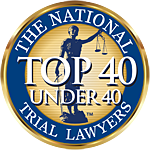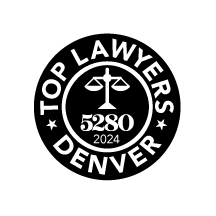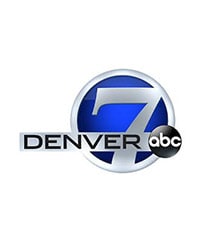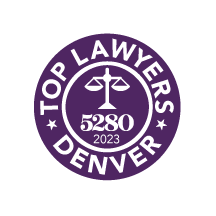When people drive their vehicles while under the influence of alcohol and drugs, they may cause serious accidents that leave other drivers severely injured—and in some cases, they do not survive. It is important to know how to collect evidence after a drunk-driving car accident. In a drunk driving accident case, the accident victim has the sole legal burden of proof. To recover damages for their injuries, accident victims and their lawyers may need to collect and introduce various types of evidence, including eyewitness statements and police reports.
As soon as possible after a drunk driving accident, you must seek prompt medical treatment at a hospital emergency room or urgent care facility. You should also talk with a knowledgeable car accident lawyer in your area about your eligibility for filing a personal injury claim with the insurance company—or a lawsuit against the intoxicated driver. Your attorney can explain your legal options and help you gather the necessary evidence to prove your claim.
After filing a claim with the appropriate insurance company, your Denver drunk driving accident lawyer can negotiate on your behalf with the adjuster. Finally, if the adjuster refuses to offer you the fair compensation you deserve, your attorney can file a lawsuit and litigate your case in court. Your lawyer will take all of the necessary legal steps to help you maximize your compensation and recover the damages you need.
What are the Legal Limits for Alcohol Intoxication?
When police officers suspect a driver is under the influence of alcohol, they may subject the driver to a chemical or breathalyzer test. The officer will use a breathalyzer machine to determine the driver’s blood alcohol concentration (BAC). When a passenger vehicle driver has a BAC of at least 0.08 percent, the law considers the driver intoxicated, and the police officer can place them under arrest.
Stricter BAC standards apply to commercial drivers, including tractor-trailer operators, and minors under 21 years old. Specifically, A 0.02 percent BAC cut-off applies to minor drivers, while a 0.04 percent BAC cutoff applies to commercial vehicle operators.
If a police officer arrests a driver for DUI, the offending driver may have to pay high monetary fines or serve jail time if they ultimately sustain a conviction. Moreover, if they cause an accident that leads to injuries and property damage, both they and their insurance company may be responsible for those damages.
An experienced drunk driving accident lawyer can determine your eligibility for filing a claim with the at-fault driver’s insurance company and assist you throughout the process. Your lawyer can also help you during settlement negotiations and work to obtain the fair compensation you deserve for your accident-related injuries.
The Effect of Alcohol on a Driver’s Brain
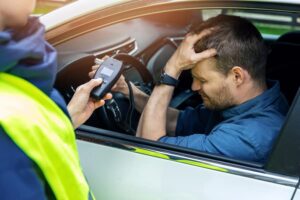 Alcohol is a depressant, slows down a driver’s central nervous system, and affects brain functioning. Drinking while under the influence of alcohol is against the law because it severely impacts a driver’s ability to operate their vehicle safely and carefully. For example, alcohol may cause a driver to experience blurred vision and other physical symptoms, preventing them from seeing other nearby drivers and pedestrians. Moreover, a drunk driver may experience limited concentration and delayed reaction time. As a result, they may be unable to stop their vehicle in time to avoid a crash.
Alcohol is a depressant, slows down a driver’s central nervous system, and affects brain functioning. Drinking while under the influence of alcohol is against the law because it severely impacts a driver’s ability to operate their vehicle safely and carefully. For example, alcohol may cause a driver to experience blurred vision and other physical symptoms, preventing them from seeing other nearby drivers and pedestrians. Moreover, a drunk driver may experience limited concentration and delayed reaction time. As a result, they may be unable to stop their vehicle in time to avoid a crash.
What Can Happen When a Drunk Driver Gets Behind the Wheel?
When a drunk driver gets behind the wheel, they may not notice an approaching vehicle or nearby pedestrian, causing a severe impact that leaves another person severely injured. Common traffic accidents that drunk drivers cause include sideswipe collisions, rear-end crashes, head-on collisions, and T-bone accidents.
A sideswipe collision happens when the sides of two vehicles strike one another while moving forward in the same direction. These accidents are common in heavy highway traffic on roads with multiple travel lanes. An intoxicated driver may negligently veer into another lane, causing their vehicle to strike the side of another vehicle. In some instances, the impact is so forceful that it pushes another vehicle entirely off the road.
On the other hand, a rear-end car crash happens when the front of one vehicle strikes the back of another vehicle. An intoxicated driver may experience delayed reaction time, preventing them from stopping their vehicle until it’s too late. These accidents are widespread in traffic that backs up quickly on the highway or near a traffic intersection.
At other times, drunk drivers cause head-on impacts. These crashes happen when the fronts of two vehicles moving in opposite directions collide. When a driver is under the influence, they may negligently cause their car to veer across a double center line or even a concrete median strip. When these accidents happen at high speeds, fatal injuries may result.
Finally, a T-bone accident, or broadside collision, happens when the front of a car strikes the side of an adjacent vehicle. An intoxicated driver might fail to see or appreciate a red light at a traffic intersection. Consequently, they may run the light, broadside a vehicle that is already in the intersection, and cause it to spin out of control or overturn completely.
If you suffered injuries in any of these accidents that resulted from drunk driving, your attorney can help you investigate the circumstances of your accident and file a claim or lawsuit against the at-fault driver.
Who has the Legal Burden of Proof in a Drunk Driving Accident Case?
In a drunk driving accident claim or lawsuit, the injured accident victim has the sole legal burden of proof. To recover monetary damages for their injuries, the accident victim must prove each legal element of their claim. However, the intoxicated driver need not prove anything in the case.
To recover monetary damages, the injured accident victim must establish:
- The at-fault driver behaved negligently and carelessly under the circumstances by operating their vehicle while under the influence of alcohol.
- The driver’s negligent actions or inactions were the cause of the accident.
- That the accident victim suffered at least one injury
- That the accident victim’s injuries directly resulted from their accident
In some drunk driving accident cases, it’s clear that the at-fault driver was under the influence of alcohol or drugs. Under those circumstances, the at-fault driver’s insurer may go ahead and accept fault. However, the accident victim must still prove the remaining legal elements of their claim to recover monetary damages for their injuries.
A knowledgeable drunk driving accident lawyer in your area can help you gather the necessary evidence to prove the elements of your personal injury claim or lawsuit. Your attorney will then work to maximize the compensation you recover for your accident-related injuries.
What Types of Evidence can Benefit a Drunk Driving Accident Case?
Accident victims and their attorneys must introduce evidence at trial to prove the legal elements of their claim. If the at-fault driver’s insurer does not accept any liability, your attorney can obtain and submit various pieces of evidence at trial to satisfy their legal burden of proof.
First, your attorney must obtain a copy of the police report that the responding officer prepared after your accident. In some instances, a lawyer might need to subpoena the report from the police department. Also, if the personal injury case ultimately proceeds to trial, the officer may need to come to court and authenticate the report’s validity.
In many disputed-liability cases, police reports are essential pieces of evidence. This is because police reports typically reveal critical details about the involved vehicles’ positions, how the accident happened, and whether the at-fault driver appeared intoxicated while at the scene. The responding police officer may also testify about their observations at the accident scene—including whether they smelled alcohol on the at-fault driver’s breath and whether the driver’s mannerisms were indicative of alcohol intoxication. Finally, police reports often indicate whether the officer issued the at-fault driver a citation at the accident scene—and, if so, what the citation was for.
Some police officers also carry a body camera on their person at all times. If the body cam was running at the time of the accident—or immediately thereafter—your attorney can subpoena the body cam footage and ask the officer to come to court and authenticate it at trial. Your lawyer can also play the footage for the judge or jury in court if it shows how the accident occurred—and if the footage supports your version of events.
Moreover, your attorney can subpoena security camera footage from nearby businesses. Many businesses leave their security cameras running 24/7, and if the camera recorded the accident and its aftermath, the footage might become supportive evidence at trial.
Like body cam footage, security footage may show the positions of the involved vehicles, the drivers’ maneuvers, and who caused the subject car accident. At the beginning of your case, your attorney may send a spoliation letter to any nearby business, asking them to preserve security camera footage they may have in their possession.
Finally, your attorney may speak with any eyewitnesses to your accident and, if necessary, subpoena them to testify in court at your trial. Eyewitness testimony can be compelling because eyewitnesses do not have a stake—financial or otherwise—in the outcome of your personal injury claim or lawsuit. Therefore, judges and juries are more likely to believe eyewitness testimony about how the accident occurred, the vehicles’ positions, the vehicles’ speeds, and the at-fault driver’s mannerisms and maneuvers.
A knowledgeable drunk driving accident attorney in your area can help you collect this evidence promptly and efficiently. If your personal injury lawsuit goes to trial, your attorney can move to admit these various pieces of evidence, call individuals to the witness stand, and aggressively fight to recover the full monetary damages you deserve for your injuries.
What are the Most Common Drunk Driving Accident Injuries?
Victims of drunk driving accidents may suffer serious injuries which leave them in severe pain—and in need of ongoing medical treatment. The injuries that an accident victim suffers depend upon the type of accident that occurs and how their body moves in the vehicle at the time of impact.
Common drunk-driving-accident injuries include:
- Traumatic head and brain damage
- Internal organ injuries
- Soft tissue contusions
- Rib fractures
- Broken bones
- Spinal cord injuries
- Paralysis
- Deat
If you suffered any of these injuries in your accident, you should seek prompt medical treatment at a hospital emergency room—or at an urgent care facility. The medical provider on duty can get you the necessary treatment and make recommendations for follow-up care if your symptoms become worse.
It is vital that you follow through on all treatment recommendations, or the insurance company may later assume that your injuries were not serious. While you focus your attention on getting better, a drunk driving accident lawyer in your area can start gathering evidence in your case and prepare to file a personal injury claim or lawsuit for damages.
What Damages Can I Recover in my Drunk Driving Accident Claim or Lawsuit?
A drunk driving accident attorney in your area can help you recover the monetary damages you need in your personal injury claim or lawsuit. The damages you may recover will likely depend upon the extent of your injuries, the cost of your medical treatment, and other related factors.
Common damages that drunk driving accident victims may recover include compensation for:
- Related medical expenses
- Lost wages
- Loss of earning capacity
- Permanent disability or disfigurement
- Punitive damages to punish the drunk driver
- Loss of use of a body part
- Loss of life enjoyment
- Emotional anguish
- Loss of spousal companionship and consortium
Contact an Experienced Drunk Driving Accident Lawyer in Your Area Today
If you suffered injuries in a car crash that resulted from drunk driving, it is essential that you have a knowledgeable Denver personal injury lawyer on board in your case as soon as possible. Your attorney can thoroughly investigate your accident circumstances and help you prove the legal elements of your claim.
If the at-fault driver’s insurance company disputes fault for your accident, your car accident attorney may informally request or subpoena the necessary documents and witnesses for court. Finally, your lawyer can represent you during settlement negotiations—and in court—to pursue the total amount of monetary compensation you deserve for your accident-related injuries.




